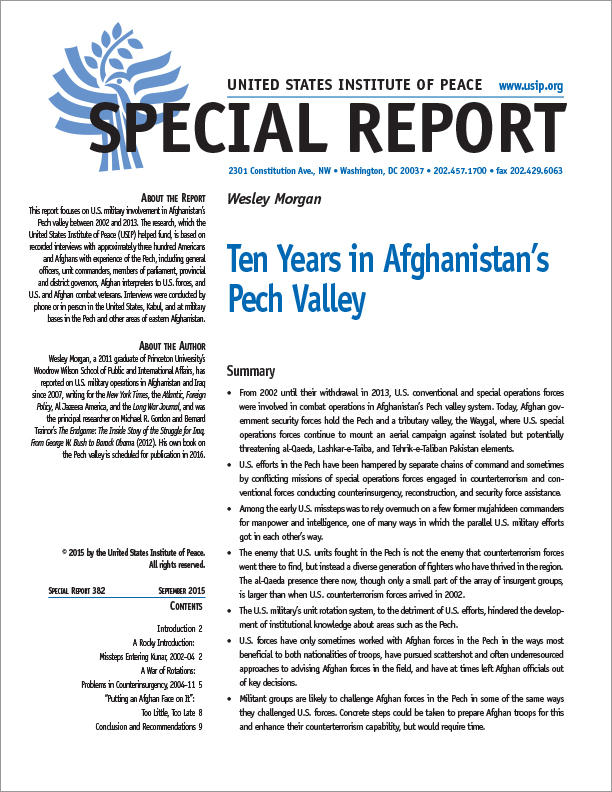The al-Qaeda presence in the Pech valley is greater now than when U.S. forces arrived in 2002, and counterterrorism efforts in the region continue. This report looks at U.S. military involvement in the Pech valley and the lessons it offers both the Afghan National Security Forces and the U.S. military. It is derived from interviews with some three hundred Americans and Afghans, including general officers, unit commanders, members of parliament, district and provincial governors, Afghan interpreters and U.S. and Afghan combat veterans.
Summary
- From 2002 until their withdrawal in 2013, U.S. conventional and special operations forces were involved in combat operations in Afghanistan’s Pech valley system. Today, Afghan government security forces hold the Pech and a tributary valley, the Waygal, where U.S. special operations forces continue to mount an aerial campaign against isolated but potentially threatening al-Qaeda, Lashkar-e-Taiba, and Tehrik-e-Taliban Pakistan elements.
- U.S. efforts in the Pech have been hampered by separate chains of command and sometimes by conflicting missions of special operations forces engaged in counterterrorism and conventional forces conducting counterinsurgency, reconstruction, and security force assistance.
- Among the early U.S. missteps was to rely overmuch on a few former mujahideen commanders for manpower and intelligence, one of many ways in which the parallel U.S. military efforts got in each other’s way.
- The enemy that U.S. units fought in the Pech is not the enemy that counterterrorism forces went there to find, but instead a diverse generation of fighters who have thrived in the region. The al-Qaeda presence there now, though only a small part of the array of insurgent groups, is larger than when U.S. counterterrorism forces arrived in 2002.
- The U.S. military’s unit rotation system, to the detriment of U.S. efforts, hindered the development of institutional knowledge about areas such as the Pech.
- U.S. forces have only sometimes worked with Afghan forces in the Pech in the ways most beneficial to both nationalities of troops, have pursued scattershot and often underresourced approaches to advising Afghan forces in the field, and have at times left Afghan officials out of key decisions.
- Militant groups are likely to challenge Afghan forces in the Pech in some of the same ways they challenged U.S. forces. Concrete steps could be taken to prepare Afghan troops for this and enhance their counterterrorism capability, but would require time.
About this Report
This report focuses on U.S. military involvement in Afghanistan’s Pech valley between 2002 and 2013. The research, which the United States Institute of Peace (USIP) helped fund, is based on recorded interviews with approximately three hundred Americans and Afghans with experience of the Pech, including general officers, unit commanders, members of parliament, provincial and district governors, Afghan interpreters to U.S. forces, and U.S. and Afghan combat veterans. Interviews were conducted by phone or in person in the United States, Kabul, and at military bases in the Pech and other areas of eastern Afghanistan.
About the Author
Wesley Morgan, a 2011 graduate of Princeton University’s Woodrow Wilson School of Public and International Affairs, has reported on U.S. military operations in Afghanistan and Iraq since 2007, writing for the New York Times, the Atlantic, Foreign Policy, Al Jazeera America, and the Long War Journal, and was the principal researcher on Michael R. Gordon and Bernard Trainor’s The Endgame: The Inside Story of the Struggle for Iraq, From George W. Bush to Barack Obama (2012). His own book on the Pech valley is scheduled for publication in 2016.
